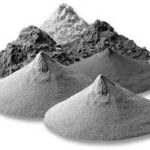

What images pop into your mind when we use the term “DfAM”? Perhaps you see beautiful topology optimized structures, organically inspired bird bone constructs, and perfectly latticed shapes? Imagine this all too familiar scenario…
It’s late on a Friday. The production supervisor has allocated the senior technician’s afternoon to set up a Ti-6Al-4V build in the designated multi-laser powder bed fusion machine. A new machine of which only one technician is currently trained on. The build chamber is purged. All you need is Design Engineering to send you the topology optimized part planned for a test build. You have left an open spot in the nesting of the build you have prepared to run over the weekend. At 4:49 PM an email pings your inbox. There is an attachment. It is the light-weighted part… riddled with overhangs and disproportionate feature transitions. You know full well this will blow up your perfectly engineered build that is set to run smoothly over the weekend…
All AM processes have a distinguishing moment when we go through this manufacturing scenario where we must merge the worlds of the manufacturable and the designable. We refer to this “make it work for the process situation”, whether it be binder jetting, directed energy or another form of AM, as Modifying for AM or more simply, MfAM. Similarly, when the organization is leaning in across the board to design parts that are not only highly optimized but also manufacturable with AM, this is DfAM. Combining the two, the entire equation for designing for AM can be defined as:

Eq 1. Designing for AM = MfAM + DfAM
When combined, DfAM and MfAM provide a winning strategy to help anyone translate design requirements into a viable end-use part with AM. For instance, if designers have the freedom to “clean sheet” a new design, then they would apply DfAM followed by MfAM. Alternatively, if they are redesigning an existing part for AM, then they would apply MfAM followed by DfAM. Iterations between the two would obviously follow in both cases, but with this thinking one can begin to tailor a process and structure approaches to support designing for AM.
While many of us agree that topology optimization, generative design, biomimicry, and cellular/lattice structures are often used for DfAM, Production and Process Engineers will be quick to ask: What about… Build orientation? Designing support structures? Build layouts? References to establish datums for the machinist? Fixturing the part during heat treatment? In some cases, helpful new tools assist, but intervention by an engineer, who understands the entire process workflow, is still necessary. As it turns out, many companies still adhere to the traditional split between design and manufacturing when it comes to AM. They subsequently struggle when a designer hands off a topology optimized part, for instance, to a process engineer only to find that it must be modified for AM in order to be printed successfully. This often adds weight and extensive post-processing, which adds cost and delays, decreasing the viability of AM and tarnishing its promise.
| DfAM is Influenced By | MfAM is Influenced By |
| Questions that draw on existing standards and our collective experiences | Reflecting on areas that can add cost during production |
| Topology optimization, generative design, lattice structures, bio-inspiration, etc. | Modifying the design or build file to improve productivity, maximize layout space, and consider the entire production process |
| Driving value and creating opportunity | Avoiding cost and work within restrictive situations |
In a recent survey, fewer than 35% of industry considered a finished component as the end point of DfAM. As a result, as an industry we use the same terms, but we do not share the same meaning, specifically for DfAM. We need to reconcile the traditional Design for Manufacturing mindset with the “design and material freedoms” afforded by AM and embrace a more holistic view when designing for AM; one that considers every step from requirements definition to delivery of a finished component. Only then will companies establish viable pathways to industrialize AM.
In the words of Helen Keller, “Alone we can do so little, together we can do so much.” The same is true for creating successful products in AM. We will achieve the most success by taking a multi-skilled, team-based approach and embracing both the opportunities and restrictions of our AM processes with the notion that designing for AM equals DfAM + MfAM from the very beginning.
If you're looking to get architectural 3D animation in the USA, our service provides an exceptional way to bring your architectural concepts to life through dynamic, immersive visuals. Through our platform, you can easily request high-quality 3D animations that showcase your designs in motion, offering a detailed view of your project from multiple angles and perspectives. Whether it's for a real estate development, a commercial building, or an urban planning project, our expert team ensures that every detail is captured in a visually compelling animation.
Through our website, you can seamlessly get architectural 3D animation tailored to your project’s specific needs. With our help, you can offer potential clients or investors an engaging experience that goes beyond static images. By integrating CGI animations with real-world settings, lighting, and textures, our team creates a lifelike experience that allows your audience to interact with your project as though it were already built. This service is perfect for presenting complex designs in a clear, visually attractive way that stands out in the competitive architectural market.




